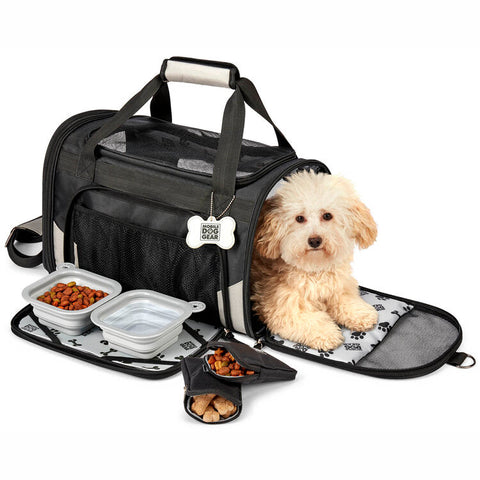
How to Open a Pet Treat Bakery: From Concept to Launch
Introduction
Opening a pet treat bakery isn’t just about baking biscuits — it’s about creating a trusted brand for pet parents who care deeply about what goes into their animals’ food. Whether you dream of a cozy storefront or an online treat boutique, launching this business blends passion, precision, and planning.
TL;DR
To open a pet treat bakery, research your market, develop a compliant and unique product line, brand authentically, and meet all health and labeling regulations. Start small with pop-ups or online sales, refine your recipes, and build loyalty through transparency and storytelling.
1. The Foundation: Understanding the Pet Treat Market
The pet industry is booming, projected to surpass $140 billion globally by 2030. Pet owners increasingly demand natural, organic, and personalized products. Your bakery can thrive if it delivers transparency, taste, and trust.
Resources like American Pet Products Association provides valuable market data and regulatory updates.
2. Key Steps to Launch
Step-by-Step Checklist
Research & Plan
● Identify your niche: organic, grain-free, breed-specific, or holiday-themed treats.
● Check local and federal pet food laws (see FDA’s Pet Food Guidelines).
● Conduct competitor analysis — visit local boutiques and browse online platforms like Etsy.
Product Development
● Test recipes for palatability, safety, and shelf life.
● Source high-quality ingredients; consider partnering with sustainable suppliers.
● Create clear, compliant labeling (ingredient list, weight, and feeding recommendations).
Branding & Marketing
● Develop a memorable brand name and logo (check USPTO’s Trademark Search).
● Set up a website with e-commerce capabilities — try Shopify or Squarespace.
● Leverage storytelling on social media: share pet photos, behind-the-scenes baking, and rescue collaborations.
Distribution
● Start locally at farmers markets, pet expos, and boutiques.
● Offer subscription boxes via your site.
● Explore wholesale opportunities with pet stores.
3. How-To: Building Your First Product Line
|
Step |
Focus Area |
Action |
Example |
|
1 |
Recipe Formulation |
Choose 3–5 base recipes (peanut butter, pumpkin, bacon). |
Test batches for texture and aroma. |
|
2 |
Ingredient Sourcing |
Partner with local farms or organic suppliers. |
Build supply relationships early. |
|
3 |
Packaging Design |
Use eco-friendly, resealable bags. |
Add window cut-outs to display treats. |
|
4 |
Compliance |
Ensure labels meet AAFCO and FDA guidelines. |
Review sample labels from competitors. |
|
5 |
Launch Strategy |
Host a “Treat Tasting” or local event. |
Gather feedback and testimonials. |
4. Financial Planning Essentials
Budget Breakdown
● Business registration and permits: $300–$1,000
● Baking equipment and ingredients: $3,000–$7,000
● Branding and website: $1,000–$5,000
● Marketing and packaging: $500–$2,000
Tools like QuickBooks or Wave Accounting can streamline your bookkeeping and inventory tracking.
5. Skill Building: Growing Beyond the Kitchen
If you want to strengthen your business acumen, consider exploring online MBA programs. A master’s in business administration equips you with skills in leadership, strategic planning, financial management, and data-driven decision-making to excel in diverse business environments.
Online formats make it easier to manage your bakery while pursuing your degree, ensuring practical, real-world application.
6. Product Spotlight: Expanding into Accessories
Once your treats are selling steadily, consider adding pet accessories to your line — collars, toys, or custom gift boxes. Check out options from Chewy’s Supplier Program to see how to integrate complementary products into your offerings.
7. FAQ — Quick Answers for New Pet Bakers
Q: Do I need a special license to sell pet treats?
A: Yes. You’ll need a business license and, in many states, a feed registration or permit. Check your state’s Department of Agriculture website.
Q: Can I bake pet treats at home?
A: It depends on local cottage food laws. Some states allow it, others require a commercial kitchen.
Q: How should I price my treats?
A: A good rule of thumb: 2.5x your ingredient and packaging cost to ensure profitability after overhead and taxes.
Q: How can I build a loyal customer base?
A: Offer a treat subscription or rewards program, and collect user-generated content (photos of happy pets) for your social feeds.
8. Glossary
● AAFCO: Association of American Feed Control Officials, sets standards for pet food labeling.
● Cottage Food Law: State regulations governing the sale of home-produced food products.
● SKU: Stock Keeping Unit — a product code used for inventory tracking.
● USPTO: U.S. Patent and Trademark Office — manages federal trademark registrations.
● Margin: The percentage of profit made on a product after costs are deducted.
9. Conclusion
Launching a pet treat bakery blends craftsmanship with entrepreneurship. Start small, perfect your recipes, comply with regulations, and build your brand with authenticity. With consistency and clear strategy, your bakery can become a beloved part of the pet community — one wagging tail at a time.



